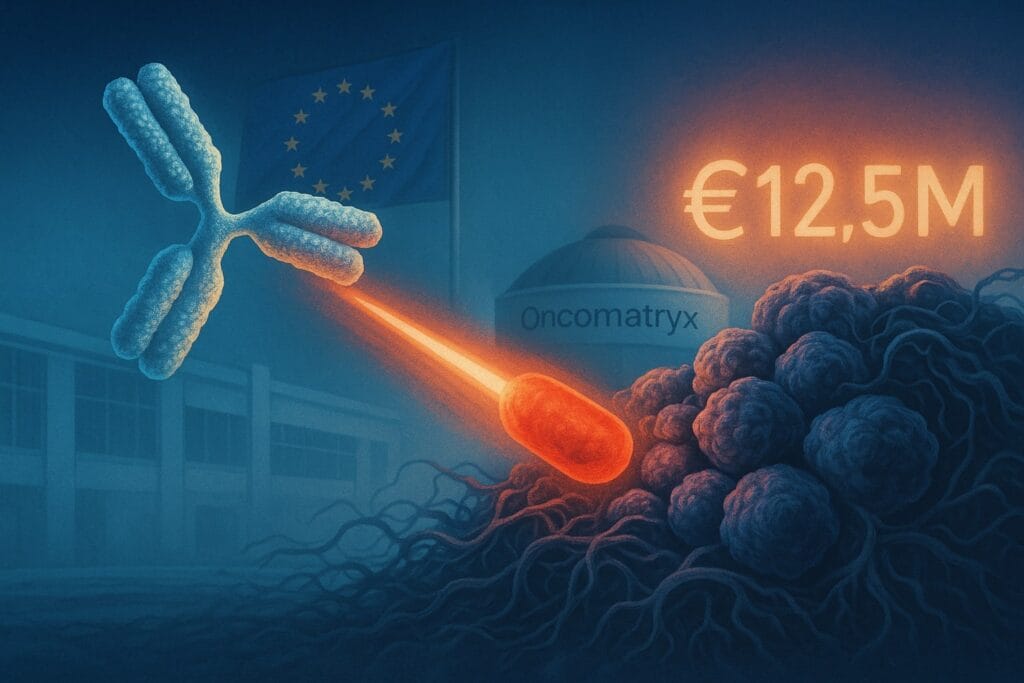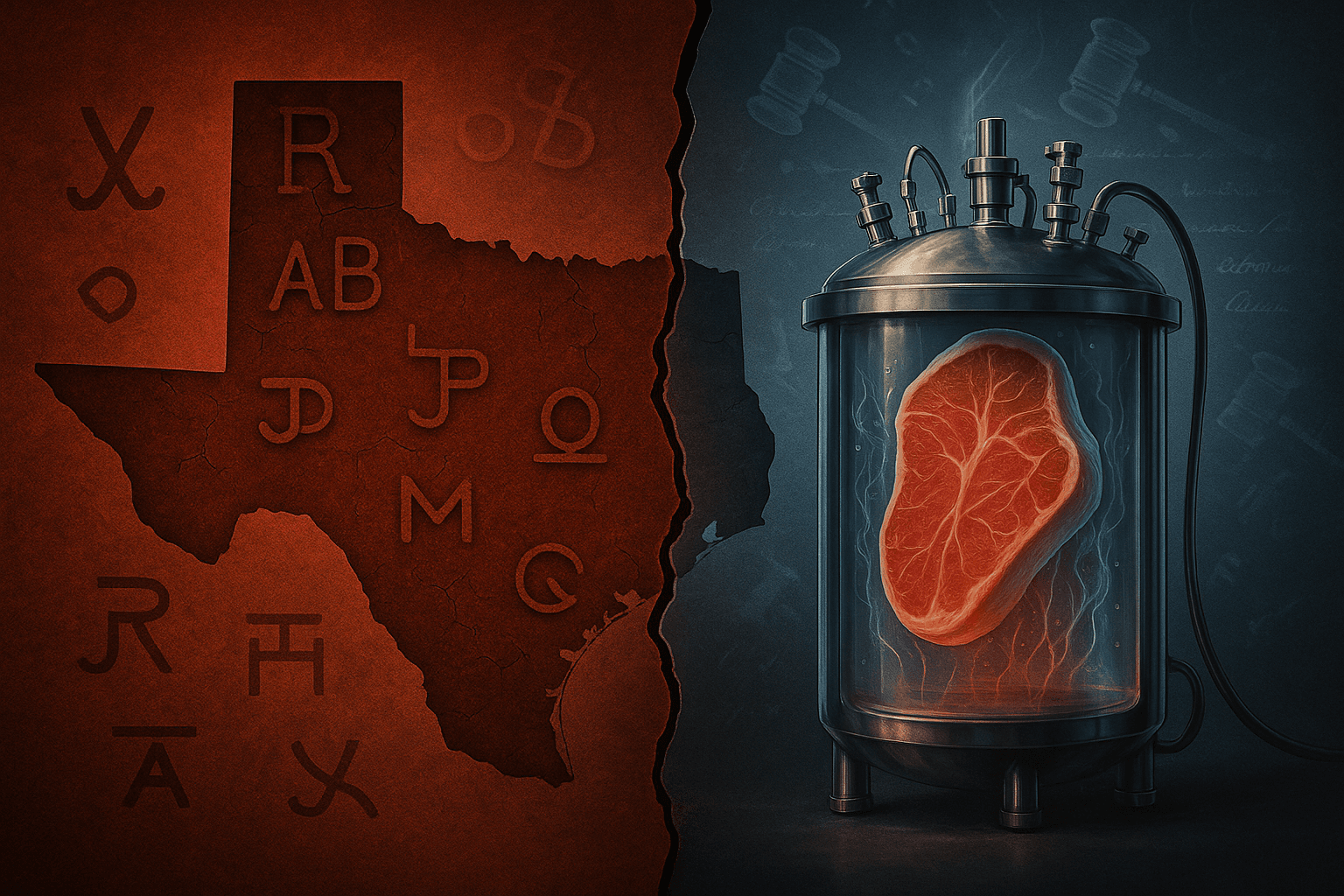European biotech received a confidence boost as the EU’s European Innovation Council (EIC) made a €12.5 million bet on Oncomatryx, a Spanish oncology company developing next-generation antibody-drug conjugates (ADCs). Oncomatryx was awarded a €2.5 million grant plus a €10 million equity investment under the highly competitive EIC Accelerator program. Out of 959 applicants, only 40 companies across 16 countries were selected – and Oncomatryx was the sole oncology company chosen. This sizable investment signals the EU’s strategic interest in ADC technology and its confidence in Oncomatryx’s innovation.
Antibody-drug conjugates marry targeted monoclonal antibodies with potent cancer-killing payloads, aiming to destroy tumors while sparing healthy tissue. After early challenges, ADCs have emerged as one of the fastest-growing niches in oncology. As of May 2025, the FDA has approved 15 ADCs, with two new approvals in 2025 alone. Global market sales for ADC therapies have surpassed $10 billion annually, attracting major pharma investments. In 2023, Pfizer paid $43 billion to acquire ADC specialist Seagen – a watershed moment for ADC deals. Other pharma giants followed suit: AbbVie spent $10.1 billion to buy ImmunoGen in 2024, adding an FDA-approved ovarian cancer ADC (Elahere) to its portfolio. Merck, AstraZeneca, Johnson & Johnson and others have inked multi-billion collaborations or acquisitions in the ADC space. This flurry of activity underscores a global arms race for ADC innovation, as drugmakers bet that linking antibodies to ultra-potent drugs will yield breakthrough cancer therapies.
Against this backdrop, Oncomatryx positions itself as a European ADC champion. The Bilbao-area company touts a fully integrated ADC development platform – from discovery through clinical trials – including proprietary toxin payloads and linker technologies. Oncomatryx’s approach is distinctive in targeting the tumor microenvironment, specifically Fibroblast Activation Protein (FAP) found in stromal cells of many solid tumors. Its lead candidate, OMTX705, is a first-in-class FAP-targeting ADC now in Phase I trials for aggressive “immune-cold” tumors like pancreatic, colorectal, and lung cancers. Early results have been promising: 95 patients treated in dose escalation showed an outstanding safety profile (no dose-limiting toxicities) and durable responses in FAP-expressing tumors. Randomized Phase Ib/II trials are underway in hard-to-treat cancers such as metastatic pancreatic and MSS colorectal cancer.

Laureano Simón, CEO of Oncomatryx, called the EIC funding “a major milestone” and validation of their novel approach. Indeed, being singled out by the EU as “Europe’s leading ADC platform” highlights how strategically important home-grown ADC capabilities have become. Oncomatryx has also been designated a strategic company by Spain’s central government and the Basque Country, with public innovation funds like CDTI’s Innvierte co-investing in recent rounds. In addition, Oncomatryx acquired Austria’s Tube Pharmaceuticals – developer of a potent ADC payload – to secure its supply chain of warheads. Together, these endorsements and expansions “firmly position Oncomatryx as a European leading player in oncology and the ADC field,” the company stated.
A New Wave of Cancer Therapeutics
The EU’s bet on Oncomatryx comes as ADCs are redefining cancer treatment paradigms. Unlike traditional chemotherapy that harms healthy cells, ADCs act like a guided missile: the antibody seeks out cancer cells expressing a specific antigen and delivers a lethal drug payload directly into those cells. The concept dates back decades but only recently hit its stride due to improved linker chemistry and more stable, targeted payloads. Successful ADCs like trastuzumab deruxtecan (Enhertu) for breast cancer have demonstrated dramatic efficacy, spurring numerous trials in other tumor types.
Big pharma’s M&A spree underscores expectations that ADCs will be cornerstones of future oncology regimens. Pfizer’s Seagen acquisition brought it four marketed ADCs (including Adcetris and Padcev) and a deep pipeline. AbbVie’s purchase of ImmunoGen similarly added clinical candidates and technology know-how. Meanwhile, European biotech innovation is also contributing: the Netherlands’ Synaffix, an ADC technology provider acquired by Lonza, signed a licensing deal with Boehringer Ingelheim worth up to $1.3 billion in 2025. And Switzerland’s ADC Therapeutics gained FDA approval for lymphoma ADC Zynlonta in 2021. All major players are thus jockeying to secure ADC platforms, pipeline assets, or enabling technologies.
Within this context, Oncomatryx’s rise illustrates Europe’s determination not to miss out on the ADC revolution. The EIC Accelerator funding – part of Horizon Europe’s push to foster breakthrough innovations – provides not just capital but credibility on the global stage. It allows Oncomatryx to accelerate its clinical programs for OMTX705, expanding patient cohorts to gather efficacy signals in multiple cancers. If trials continue to show favorable safety and tumor responses, Oncomatryx could become a strong contender for a licensing deal or partnership with a larger pharma company seeking novel ADC assets.
Equally, Oncomatryx’s success would validate the EU’s approach of directly funding high-risk, high-reward biotech. In recent years, Europe has sought to close the gap with the US in commercializing cutting-edge life science research. By backing ADC development – an area at the forefront of cancer therapy – the EU is effectively investing in a new generation of precision medicines. ADCs also align with the broader trend of convergence between biologics and cytotoxic drugs, an interdisciplinary strength area for European research institutions and SMEs.
Of course, challenges remain. ADCs are complex to develop and manufacture, requiring expertise in antibody engineering, medicinal chemistry, and high-potency drug handling. Oncomatryx will need to demonstrate not only clinical efficacy but also an ability to produce its ADCs at scale. The company’s integrated R&D and conjugation facilities should help on that front. Moreover, competition in the ADC field is intense; dozens of companies globally are advancing candidates targeting various tumor markers. Oncomatryx’s focus on tumor microenvironment targets like FAP is somewhat unique – many competitors aim at antigens on tumor cells themselves. If Oncomatryx can show that taking out the supportive stromal cells (via FAP) delivers patient benefit, it could carve a valuable niche.
Already, Oncomatryx’s approach has drawn notice. The company presented encouraging data at the ASCO 2025 conference, and its designation as a strategic innovator by Spanish authorities suggests a homegrown success story in the making. With EU funding now in hand, Oncomatryx plans to push OMTX705 through Phase II trials and potentially into pivotal studies. A positive outcome could see Europe usher in its first globally competitive ADC therapy, developed and produced on European soil.
In summary, the EU’s €12.5M bet on Oncomatryx symbolizes Europe’s broader bet on ADCs as the future of oncology. It reinforces a trend of public investors stepping up to fuel biomedical innovation in areas of high unmet need. Should Oncomatryx’s ADC platform deliver a new effective treatment for refractory solid tumors, the payoff will be measured not just in financial returns but in lives extended – fulfilling the promise of “magic bullet” cancer drugs first envisioned over a century ago, now finally coming to fruition with ADC technology.












